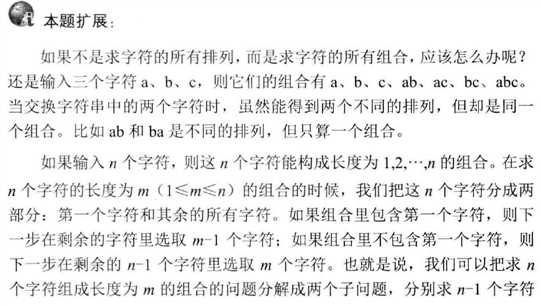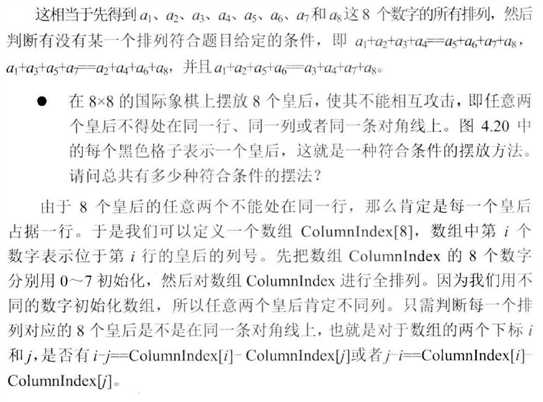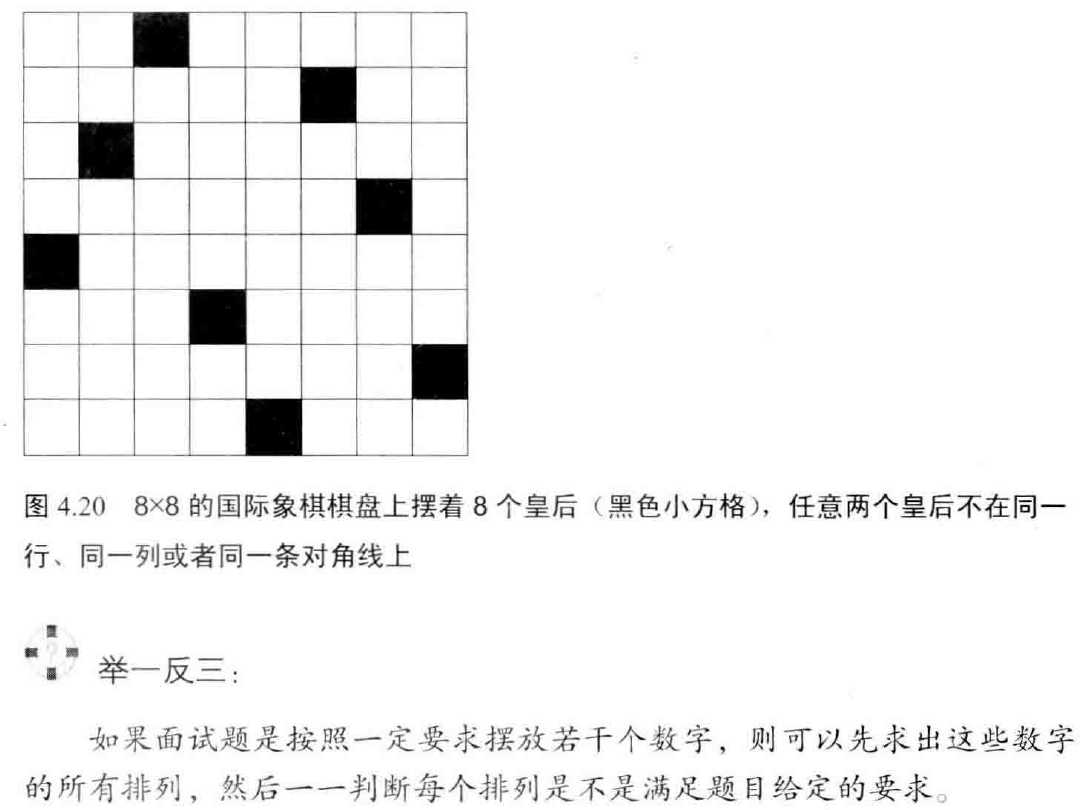标签:一个 pst pch 图片 argv 排列 递归 nbsp bsp
// 面试题38:字符串的排列 // 题目:输入一个字符串,打印出该字符串中字符的所有排列。例如输入字符串abc, // 则打印出由字符a、b、c所能排列出来的所有字符串abc、acb、bac、bca、cab和cba。 #include <iostream> void Permutation(char* pStr, char* pBegin); void Permutation(char* pStr) { if (pStr == nullptr) return; Permutation(pStr, pStr); } void Permutation(char* pStr, char* pBegin) { if (*pBegin == ‘\0‘) { printf("%s\n", pStr); } else { for (char* pCh = pBegin; *pCh != ‘\0‘; ++pCh) { char temp = *pCh;//先看有多少个可能的排头,为每个排头做递归处理 *pCh = *pBegin; *pBegin = temp; Permutation(pStr, pBegin + 1); temp = *pCh;//还得交换回来 *pCh = *pBegin; *pBegin = temp; } } } // ====================测试代码==================== void Test(char* pStr) { if (pStr == nullptr) printf("Test for nullptr begins:\n"); else printf("Test for %s begins:\n", pStr); Permutation(pStr); printf("\n"); } int main(int argc, char* argv[]) { Test(nullptr); char string1[] = ""; Test(string1); char string2[] = "a"; Test(string2); char string3[] = "ab"; Test(string3); char string4[] = "abc"; Test(string4); system("pause"); return 0; }




标签:一个 pst pch 图片 argv 排列 递归 nbsp bsp
原文地址:https://www.cnblogs.com/CJT-blog/p/10500922.html